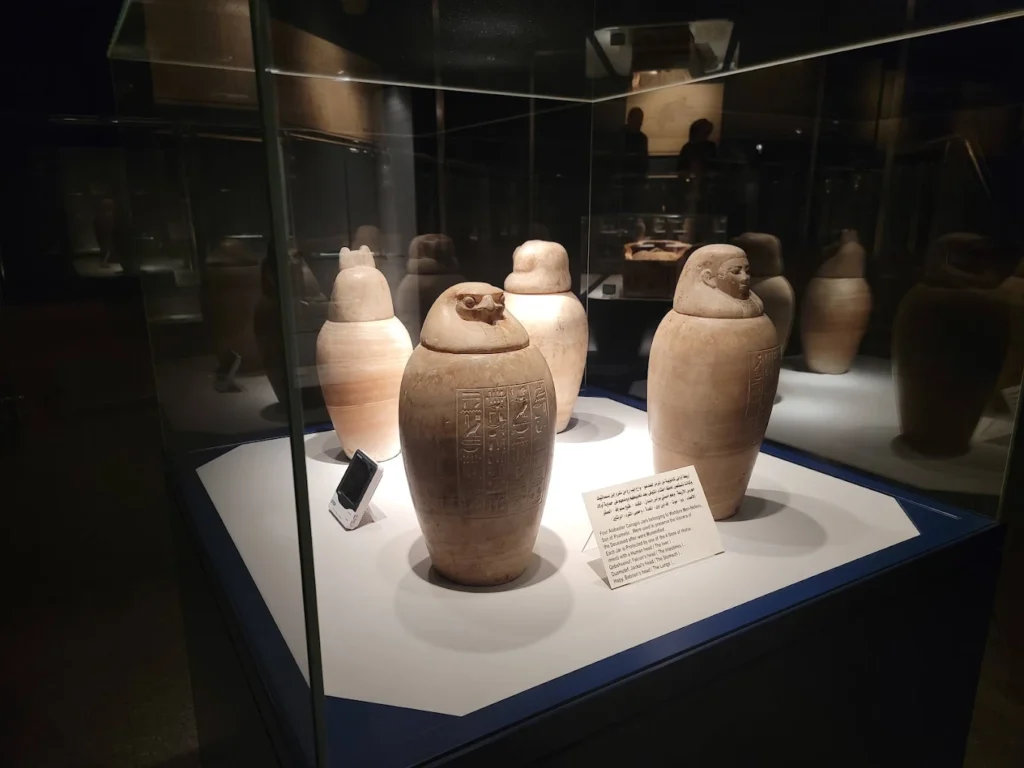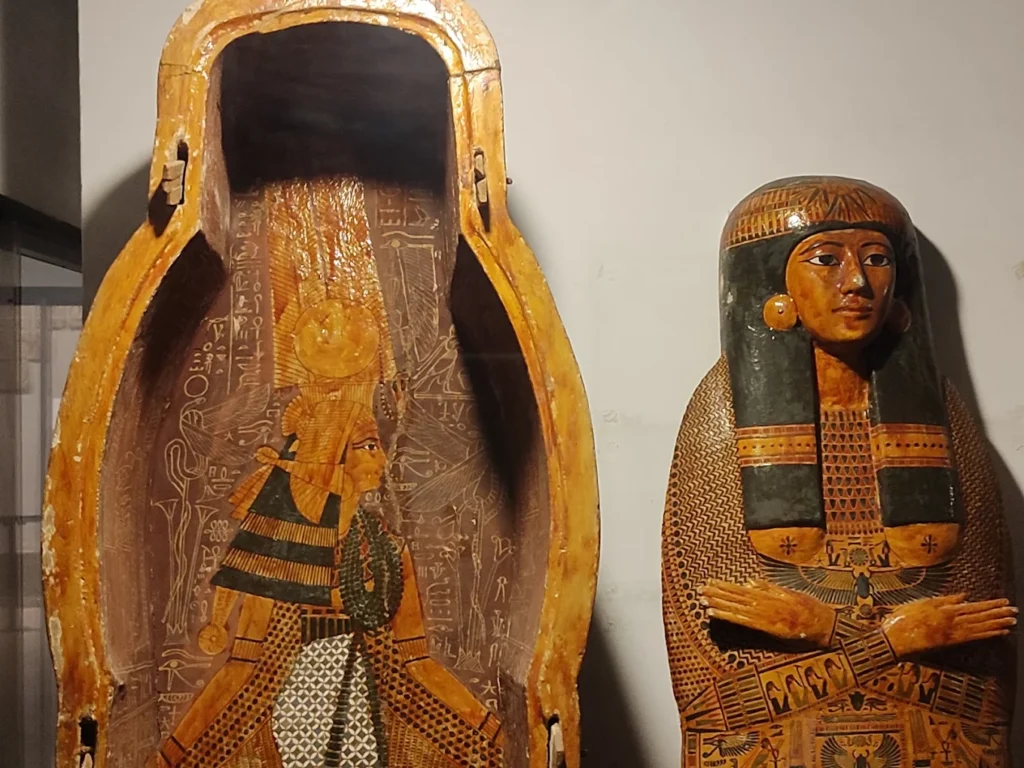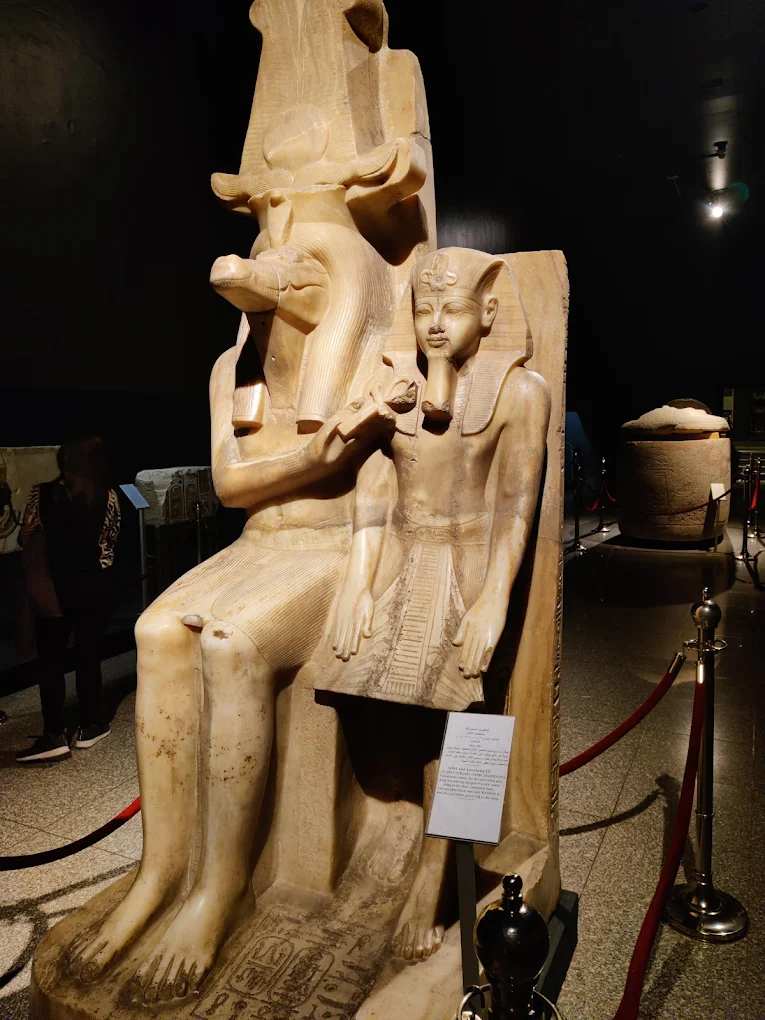The Afterlife and Mummification
Ancient Egyptians held a deep belief in the afterlife. They practiced mummification to preserve bodies for the soul’s journey after death. The process involved:
Removing internal organs (except the heart, believed to be the seat of intelligence and emotion, essential for judgment in the afterlife).
Drying the body using natron salts, a natural desiccant.
Wrapping the body carefully in layers of linen bandages.
This elaborate ritual reflected their profound respect for the dead and hope for eternal life.
Major Deities of the Egyptian Pantheon
Egyptian religion was polytheistic, worshipping a vast array of gods and goddesses, each embodying natural and social elements:
Amun: Revered as the king of gods and the father of the pharaohs, Amun was central to state religion especially during the New Kingdom.
Anubis: God of mummification and protector of the dead, depicted with a jackal head.
Osiris: God of the afterlife, resurrection, and fertility, Osiris symbolized eternal life.
Isis: Goddess of magic, motherhood, and protection, Isis was venerated for her powerful spells and nurturing qualities.
Horus: God of the sky, war, and protection, often depicted as a falcon or with a falcon head; protector of the pharaoh.
Ra: The sun god, embodying creation and life, Ra was one of the most important deities, representing the daily journey of the sun across the sky.
Animals and Divine Incarnations
Ancient Egyptians believed that certain animals were physical manifestations of gods on Earth. For example, cats were sacred to Bastet, the goddess of home and fertility, while crocodiles were associated with Sobek, the god of strength and power.
Temples: Centers of Worship and Community
Temples were not only places of worship but also hubs of social, economic, and administrative life. They hosted rituals, festivals, and housed priesthoods who maintained sacred knowledge and performed ceremonies to appease the gods and ensure cosmic order.
Cultural Legacy and Influence
The ancient Egyptian worldview was deeply connected to nature, spirituality, and community. Their cultural achievements in art, architecture, and religion have inspired civilizations worldwide for millennia. From the grandeur of the pyramids and temples to their rich mythology, Egyptian culture remains a cornerstone of human heritage.
Conclusion: The Enduring Spirit of Ancient Egypt
Egypt’s ancient culture and religion showcase a civilization that deeply valued the harmony between life, death, and the divine. The Nile nurtured their daily lives while their beliefs shaped a civilization that continues to captivate and inspire the world.
Ready to explore more about Ancient Egypt? Stay connected for fascinating insights into this timeless civilization



